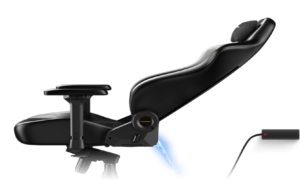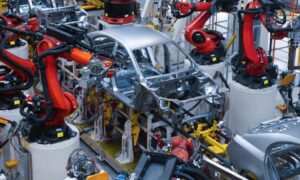Before getting new hires, you need to select a proper tech stack for your project. But technology stacks vary across industries, application types, and project sizes. Some tech solutions are more bankable than others. Some retain a stronghold for years. Some don’t pan out and sink into oblivion.
That is why business owners should have at least basic knowledge of popular tech stacks and how to choose the right one for the win.
What Is A Solutions Stack?
Every successful application sits on a technology stack. Usually, it refers to the entire basket of technologies that power a software project. This term spans everything from coding languages and IDEs to servers and plugins.
A solutions stack may be as concise as a couple of fundamental technologies and expand as the projects get more complex.
Here’s what a solutions stack can comprise:
- programming languages;
- databases;
- web frameworks;
- runtime;
- servers;
- operating systems.
Based on the application type, solutions stacks can be further divided into web stacks and application stacks. As the name implies, a web stack uses technologies fit for web application development, while an application stack enables an operational app.
Some stacks have made such a dent in the market that developers have united them under acronyms.
Trending Technology Stacks In 2021
MEAN
You’ve probably heard of this solutions stack by now. As of 2021, it’s one of the most well-known sets of technologies. The MEAN stack relies almost entirely on JavaScript as its main coding language.
It is an JavaScript-based framework that is primarily used for building cloud-based apps. Solutions fueled by the MEAN stack are flexible and scalable, which makes them excellent for hosting in the cloud.
The stack includes its web server so that it can be easily deployed, and the database can be scaled as needed for short-term peak usage growth.
The components of this tech stack are:
- MongoDB;
- Express.js;
- Angular.js;
- NodeJS (open-source, cross-platform server).
LAMP
LAMP is the closest competitor of the MEAN stack. It is an age-old classic industry standard fit for Linux distributions. LAMP offers a robust platform for developing and hosting complex web applications. Supported by a huge community, various libraries, and tools, you’ll benefit from time-tested technologies and find dev hires easily and quickly.
LAMP includes the following four open-source software ingredients:
- Linux;
- Apache;
- MySQL;
- PHP/Perl/Python.
MEAN and LAMP are often placed in comparison relations. But they are not completely the same. Thus, MEAN has a front-end component, whereas LAMP caters to just the back end.
LAMP is considered more low level, whereas MEAN is more high level. Also, you’ll likely need to borrow Linux from LAMP, since MEAN doesn’t have an operating system.
MERN
MERN is almost akin to MEAN. The only difference is that React takes the place of Angular. The main advantage for developers using the MERN stack is that every line of code is written in JavaScript. It is a programming language that is used everywhere, both for client-side and server-side code.
Thereby, MERN includes the following components:
- MongoDB (cross-platform document database);
- Express (the basic web application platform);
- React (JavaScript library for creating user interfaces);
- Node.js (cross-platform JavaScript execution environment).
Web vs Mobile Tech Stacks
All technological stacks consist of two equally essential components. They are frontend or client/user-side and backend or server-side. The former consists of JavaScript, CSS, HTML, UI libraries, and frameworks. Server-side software includes servers and operating systems, coding languages, web frameworks, and databases.
Web applications are Internet-enabled. It means that you don’t have to download them. Therefore, web solutions stacks rely on the resources hosted by the system. To power a web application, your developers will use a combination of back-end and front-end software.
Solutions stack for a web application
Front-end development
The client-side of an app is the visible part of the solution. It is the app’s facade the users interact with. Hence, everything that catches your eye – fonts and colors to dropdown menus – is a combination of front-end technologies.
The web stack technologies that back up this development layer are established and time-tested:
- HTML helps create and structure sections, paragraphs, headings, links, and blocks for web pages and applications.
- CSS describes how HTML components are to be placed on the screen by controlling fonts, layouts, and colors of text and background.
- JavaScript gives web pages interactive elements that engage a user.
Server-side development
Back-end development fuels the behind-the-scenes structure that makes front-end elements possible. The server side is where you store and organize data as well as provide the logic to send the proper data back to the client.
Developers need the following set of technologies to set up the backend:
- Coding languages (Ruby, Python, PHP);
- Frameworks (Django, Express, Ruby on Rails);
- Databases (MySQL, SQL Server, PostgreSQL,);
- Server providers (Firebase, Nginx, and others).
Solution Stack For a Mobile Application
The Android structure differs greatly from the iOS one. Therefore, you’ll need a different set of technologies to build the two. We’ll start with the native development that uses platform-specific tools.
App development for Android
1) Coding languages
Currently, you can build native applications on Android by choosing between two Android-specific languages. Thus, Java is the official language for Android development and is supported by Android Studio. Kotlin is also the official and most recently introduced Android language. Usually, Java serves as the basis for mastering Kotlin, hence the hired developer should have a profound understanding of the two. The main difference between Kotlin and Java is that the former is more lightweight than the latter.
2) Android editors and IDEs
Android Studio is the traditional IDE for Android applications. Supported by Google, it provides a whole set of developing capabilities and tops the list of preferred tools for developers. Android Studio has plenty of alternatives. The most popular ones include IntelliJ IDEA, ADT, and Eclipse.
Platform-specific development for iOS
1) Coding languages
Swift leads the list of most widely used coding languages for Apple devices. It is a programming language developed by Apple to write applications for desktop, mobile applications, and servers. It is a great option for native development thanks to its scalability, interoperability, and regular updates.
Objective-C is another popular language used for creating iOS applications. Created as an extension of the C programming language, it is a stable and mature technology. Although its popularity is lower than that of Swift, Objective-C is still a preferred programming language among many developers.
2) iOS IDEs
Just like with Android, you need app code editors and development environments to build an iOS application. AppCode and Xcode are the most widely used tools.
Cross-platform mobile development
If you are pressed for money and time, hybrid mobile development is the way to go for your company. Thus, you make a single application that is suitable for various operating systems, instead of building a different app version for each platform.
To create a native-like application, you can pick one of the following technologies:
1) Xamarin
Xamarin is a Net framework used for building hybrid mobile solutions. It is suitable for any mobile platform and provides the same performance and user experience as native solutions.
2) React Native
React Native is one of the top hybrid mobile development technologies. This framework relies on React — a reliable JavaScript library for building user interfaces. The main differentiator of React Native is that you can implement a universal JS language along with Java, Swift, or C. Thus you build a hybrid app but with a native-like experience.
Now that we’ve gone over the must-have technologies in your solutions stack, let’s go over the frameworks and languages of leading enterprises.
Popular Stacks And Coding Languages In 2021
Facebook, Instagram, and Uber are some of the prominent application examples that have leveraged the finest mix of tech stacks. Let’s have a closer look at these giants.
The media-sharing app Instagram takes social networks to the next level. The application owes its resounding success to a set of complex technologies blended together.
Products that make up Instagram’s solutions stack include:
- Javascript;
- Python;
- React;
- Nginx;
- Java;
- PostgreSQL;
- Redis;
- Django;
- React Native;
- Objective-C;
- Cassandra, and others.
Uber
As the company says, their main mission is to make transportation as reliable as running water. To implement this vision, Uber relies on complex data that is then bundled up as a platform.
Let’s see what Uber’s technical stack includes:
- jQuery;
- Python;
- Node.js;
- React;
- Nginx;
- Java;
- MySQL;
- PostgreSQL;
- MongoDB;
- Redis;
- Kafka;
- Swift;
- Go;
- Objective-C;
- Apache Spark, etc.
In 2020, Facebook completely rebuilt its technological strategy to revamp its new web app for today’s browsers.
Thus, the world’s largest social utility now leverages the following set of technologies:
- PHP;
- React;
- GraphQL;
- Memcached;
- Cassandra;
- Flux;
- Presto;
- Tornado;
- Relay framework;
- Hack;
- Yoga, and others.
However, we can only refer to the general solutions stack, since Facebook abounds in various facets. Hence, there’s no singular combination of technologies.
The Final Word
Technologies unfold at a lightning speed. Therefore, most business owners face the conundrum of choosing a perfect tech stack to stay competitive in the market. While there’s no universal formula to this undertaking, you should select proper technologies based on your niche and unique business needs.
But there are a few things that make most of the successful solutions stacks. Your combination of technologies should be scalable, performant, and fit for your budget.



































